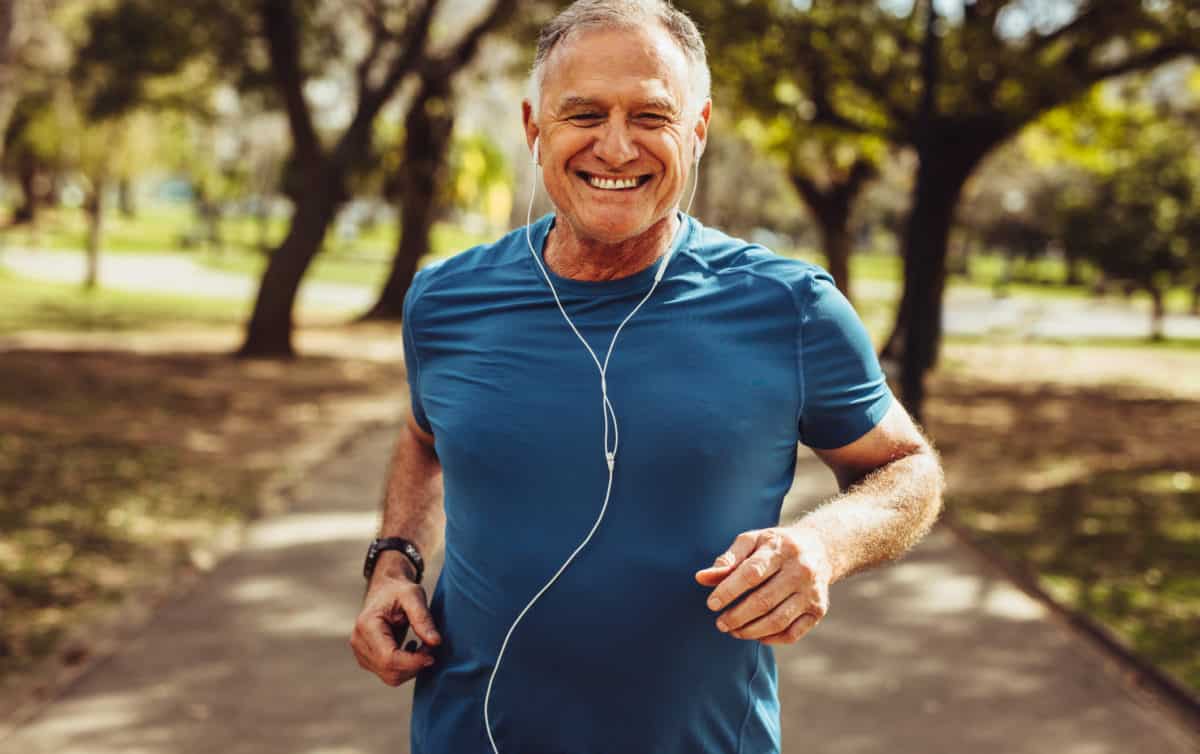The long-term health effects of isolation and decreased physical activity in older adults is unknown, therefore staying active is vitally important to older adults’ physical, social and mental well-being. Where possible include strength and balance activities when exercising. And finally, it’s never too late to start! Doing a small amount of exercise each day will have long-term positive health benefits for all.
Background
The COVID-19 pandemic has impacted our lives in many ways. For older adults, the opportunities to be physically active have been reduced significantly. Prior to the pandemic physical activity for older adults often occurred incidentally, with activities such as walking to the shops, meeting friends at a local community group or going out for coffee. They would also have got physical through organised efforts, such as a round of golf, gym classes or cycling with friends. With stage 4 restrictions in Melbourne (2nd of August – predicted to 13th of September) and Stage 3 restrictions across regional Victoria (5th of August – predicted to 13th of September), physical activity in older adults is likely to be impacted even further.
About the research
A/Prof. Cathy Said, A/Prof. Frances Batchelor and Prof. Gustavo Duque, members from the Melbourne Academic Centre for Health (MACH) Care of the Ageing Network, recently released an article looking at physical activity for older adults during the COVID-19 pandemic. Their article highlights the importance of continuing to care for the physical health of older adults in our community. Media attention to date has focused largely on the acute or immediate health needs of older adults in hospitals settings, however the majority of older adults in Australia lived well within their community pre-COVID. It is vital to continue supporting their physical health needs during the next phase of the pandemic.
Older adults are one of the most vulnerable groups of our population, who when required to self-isolate are less likely to access health services and seek assistance from other support services during this time, partly in fear of being exposed to COVID-19.
To reinforce the importance of physical activity for older people, exercise can be used to:
- Build strength
- Improve balance
- Increase independence, function and mobility
- Decrease frailty
- Decrease risk of falls
How can older adults stay physically active during lockdown?
A/Prof Cathy Said recommends that if you are new to exercise, it is best to start slow and to gradually build the amount of exercise being done each day. Seeking advice from a health professional is also important, especially if you have a chronic, or long term, health condition. However given the current restrictions, she acknowledges this may be difficult. It was with this in mind that A/Prof Said and associates took action and created the Safe Exercise at Home website: https://www.safeexerciseathome.org.au/
The website provides a guide to activity for older adults across 3 levels:
Level 1: for those who are new to exercise or who are physically unsteady.
Level 2: for those who can walk down the street and/or may get some assistance with daily living.
Level 3: for those who walk regularly (30 minutes in one session) and/or may be involved in activities such as gardening.
A/Prof Said emphasises the importance of including balance and strength exercise in physical activity routines for older adults, as this decreases the risk of falls and other adverse health outcomes, as well as improving everyday functional movements such as sitting up and down.
What are the next steps?
A/Prof Said and colleagues acknowledge that older adults may not always have access to technology, such as computers. Responding to the needs of their audience, the researchers are soon to release a digital booklet that can be downloaded from the website. Health professionals or family members can download and print this for use.
The website is constantly being updated with new information as the requirements evolve. For example, older adults have reported challenges of wearing a mask whilst exercising, such as their glasses fogging up. Information about how to wear a mask safely during exercise is now available.
The researchers are hoping to develop their program to incorporate safe exercise programs for older adults into the hospital system.
What our consumers say:
“I have been exercising daily for many years to manage pain and stay flexible. This article has inspired me to maintain my efforts and to try some more challenging exercises.
Exercise makes many older people like me, feel good, both physically and mentally.”
Judy McCahon, Consumer Representative
“As the restrictions have become tighter and for our health it is better to restrict movement outside, having an example of some things that may assist keeping us healthy physically and mentally is extremely important. The simple workout plans are a great start for anybody.”
Barry Baulch, Consumer Representative

